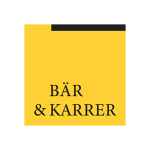A recurring issue in post-M&A disputes is the quantification of damages. If, for example, the share price paid by the buyer in a share deal turns out to be inflated, the buyer must prove both the existence and the amount of the incurred damage in a sufficiently concrete and substantiated manner in order to prevent the dismissal of its damages claim by a court or arbitral tribunal. The proof and calculation of the (reduced) value of a company can be very challenging, especially, if the M&A contract does not contain any information on the basis for the price calculation.
This article summarises the legal qualification of share and asset deals and the common methods employed to calculate the value of a company in post-M&A disputes under Swiss law. It further references the burden of proof and limitations of liability in such disputes.
Qualification of share and asset deals
Under Swiss law, the legal provisions on the sale of goods pursuant to Article 187 ff. of the Swiss Code of Obligations (CO) apply in principle also to contracts for the sale of a company.
In case of share deals, however, the position of the Swiss Federal Supreme Court (Federal Court) is that the object of the purchase are the shares as such, rather than the business they represent.
In case of asset deals, the company's assets constitute the object of the purchase. The Federal Court thus qualifies the asset purchase agreement as a contract sui generis. However, it typically applies the provisions on the sale of goods also to asset deals.
Since for share deals the shares constitute the object of the purchase, Swiss jurisprudence holds that the default warranty provisions in Articles 192 ff. and 197 ff. of the CO apply only insofar as defects in the rights sold with the shares or the share certificates are concerned, but not in case of defects in the business of the company. Therefore, the seller is liable for the economic value of the shares only if it has given specific representations or warranties in this respect. While doctrine almost uniformly objects to the Federal Court's position, it remains the current state of Swiss law.
Definition of damage and valuation of a company
Under Swiss law a damage is the involuntary decrease in assets (including loss of profit) or increase in liabilities. It is calculated as the difference between the current state of the creditor's assets and the hypothetical state that the creditor's assets would have had without the damaging event. This includes all heads of damages, such as direct damages, incidental damages and consequential damages, notably lost profit.
Quantification, first of all, follows any method on which the parties may have agreed in their contract. Absent such agreement, quantification is based on the so-called ‘relative calculation method’. According to this method, the purchase price is to be reduced by the same ratio that the objective value of the defect-free object of purchase has to the objective value of the defective object of purchase. Unless the parties have agreed otherwise, the relevant point in time for the calculation of the reduced value is the time of the transfer of risk (Article 185 of the CO), i.e. the time of closing.
Obviously, determining the objective value of a company for the purposes of this quantification method can be difficult. The choice of the valuation method can thus be decisive for the quantification of damages in M&A disputes.
Common valuation methods can be divided into three main categories. The ‘asset-based approach’ encompasses methods which focus on the values of individual assets that constitute the business, such as the book value method or the net asset value method. The ‘income-based approach’ covers methods that focus on future economic benefits and convert such benefits into a single present value amount. It includes e.g. the discounted cash flow (DCF) method and the earnings value method. Finally, the ‘market-based approach’ establishes the value of an asset by comparing it to similar assets sold on the market (e.g. market price for listed shares in share deals).
The Federal Court employs different valuation methods depending on the particularities of each case (e.g. the profitability or size of the company, the available information, etc.). It typically takes a combined approach by considering both the net asset value and the capitalised earnings value. While the Federal Court has hardly ever (if at all) used the DCF method for the calculation of damages, such method has gained widespread application in business valuation in international arbitration.
Burden of proof
The burden of proof for the existence and the amount of damage lies with the buyer. Since the valuation of a company requires specialised expertise, party- or court/tribunal-appointed valuation experts are often involved in post-M&A legal proceedings.
In terms of discharging the burden of proof, parties may find Swiss state courts to apply rather restrictive standards, whereas, very broadly speaking, international arbitral tribunals may show somewhat more flexibility.
The quantification of damages often consumes considerable resources, time and costs. This is especially true in cases of suspected fraud where the finding of evidence to substantiate the damage often requires additional efforts (e.g. forensic email reviews and accounting, interviews of key personnel, etc.).
Some relief may be provided by Article 42(2) of the CO which, in cases where the exact value of the damage cannot be quantified, gives the court certain discretionary power to estimate the damage. However, while this provision lightens the burden of proof under certain conditions, it does not eliminate it.
Alternative to claiming the reduced company value, it can be easier for the buyer to claim compensation for individual damage positions based on breaches of specific warranties (e.g. reduced value of means of production, lost profit, etc.).
Limitations of liability
M&A contracts typically contain limitation of liability clauses. Swiss law restricts the parties' ability to limit or exclude liability primarily in two provisions.
Article 100(1) of the CO stipulates that any agreement excluding liability for unlawful intent or gross negligence in advance is void. Thus, any exclusion of specific types of damage (e.g. consequential damages) does not apply if the party in breach acted in gross negligence or willfully.
Specific to warranty obligations under sales contracts, Article 199 of the CO provides that the seller may exclude all warranty obligations except for having fraudulently concealed a defect. There remains some legal uncertainty whether and to what extent sellers can invoke such exclusions with respect to express representations and warranties.
Conclusion
The quantification of damages in post-M&A disputes depends largely on the applied valuation method, with contractually agreed valuation methods taking priority. Otherwise the Federal Court uses a plurality of methods to determine the objective value of the company and on that basis the recoverable loss. Obviously, the role of a party in the transaction as seller or buyer will often be a factor in such party's readiness to agree to a valuation method in advance.
With respect to drafting forum selection clauses, differences between litigation and arbitration currently remain regarding the valuation methods applied absent a contractually agreed method and the standards applied to discharging the burden of proof.
Pascal Hachem
Partner, Bär & Karrer
E: pascal.hachem@baerkarrer.ch
Nadine Pfiffner
Associate, Bär & Karrer
E: nadine.pfiffner@baerkarrer.ch



